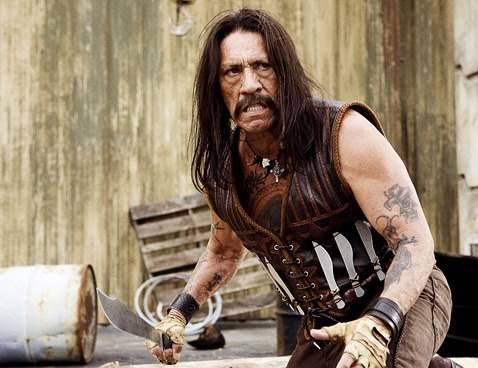I've been thinking about this, and I know a few people here run this setup and/or have asked about it, so I thought it'd be good to list the benefits and drawbacks. I doubt everyone has considered all the factors involved, and I may have missed a few myself - so here goes.
Benefits:
1. Better bump absorption and traction where it's needed most.
Rear suspension on an MTB (particularly DH) benefits from a variable leverage curve (generally progressive) and variable axle path. It also benefits from lateral and torsional forces being transmitted through radial bearings rather than linear bushings on a suspension fork. The net result here is that rear bump absorption on most bikes is superior to the front, and is less in need of improvement. 650b front improves the inferior end while reducing the ill effects of going full 650.
2. Improved stability and/or reduced rider fatigue.
Front suspension on an MTB (particularly DH) plays a far bigger role in controlling forward pitching moments, particularly under faster riders and steeper tracks - often compromising bump absorption. 650b on front would help regain this, or allow running a firmer front end for increased stability without decreasing traction or increasing bump transmission to rider hands/arms.
3. Minimised mass increase compared to full conversion.
Front wheel is less strength-critical than rear, so it's easier to get away with a slightly lighter rim and minimise the weight gain from the conversion - whereas DH rear wheels are highly stressed and will bear the full brunt of the conversion to 650b in terms of mass increase. So this way you get to keep the stronger wheel where it's needed and minimise the mass penalty over a 650F/R conversion.
4. The kidwoo factor.
You can finally remove yourself from the pool of having anything in common with kidwoo, probably my biggest concern at this stage. I know many here feel strongly about "26 4 lyf" but have been looking for alternatives due to this issue.
Drawbacks:
1. Reduced handling and cornering performance.
Increase in rotational inertia is a bigger problem on the front, so switching this end to 650b will have a greater detrimental effect on handling, particularly cornering.
2. Increase in vehicle mass.
The increase in mass, while less of an issue at the front, is still an issue. Perhaps someone can provide actual numbers for the increase when using an identical rim, tyre, tube, and spoke set in 650b versions - but at a rough guess 150g is probably the lowest penalty you can get away with unless you sacrifice durability or traction (thinner tyres or tubes = lower traction or reduced reliablity/durability).
3. Geometry needs correcting.
Thankfully this isn't very hard with modern frame and fork adjustability, but does need to be considered and may require additional parts (Lower bars, reducing fork a2c if range allows, lowering BB if needed, steepening head angle, or a combination of these).
4. Tire economy and component availability.
Can't transfer old front tire to rear and buy new front tire. Questionable availability of 26" products in general. Possible scenario of being at kidwoo's mercy for all future parts purchases after he buys entire stock of remaining 26" items and drip feeds them to you at greatly inflated cost. Related side-effects of having to talk to kidwoo.
Feel free to correct or add to the list.
Benefits:
1. Better bump absorption and traction where it's needed most.
Rear suspension on an MTB (particularly DH) benefits from a variable leverage curve (generally progressive) and variable axle path. It also benefits from lateral and torsional forces being transmitted through radial bearings rather than linear bushings on a suspension fork. The net result here is that rear bump absorption on most bikes is superior to the front, and is less in need of improvement. 650b front improves the inferior end while reducing the ill effects of going full 650.
2. Improved stability and/or reduced rider fatigue.
Front suspension on an MTB (particularly DH) plays a far bigger role in controlling forward pitching moments, particularly under faster riders and steeper tracks - often compromising bump absorption. 650b on front would help regain this, or allow running a firmer front end for increased stability without decreasing traction or increasing bump transmission to rider hands/arms.
3. Minimised mass increase compared to full conversion.
Front wheel is less strength-critical than rear, so it's easier to get away with a slightly lighter rim and minimise the weight gain from the conversion - whereas DH rear wheels are highly stressed and will bear the full brunt of the conversion to 650b in terms of mass increase. So this way you get to keep the stronger wheel where it's needed and minimise the mass penalty over a 650F/R conversion.
4. The kidwoo factor.
You can finally remove yourself from the pool of having anything in common with kidwoo, probably my biggest concern at this stage. I know many here feel strongly about "26 4 lyf" but have been looking for alternatives due to this issue.
Drawbacks:
1. Reduced handling and cornering performance.
Increase in rotational inertia is a bigger problem on the front, so switching this end to 650b will have a greater detrimental effect on handling, particularly cornering.
2. Increase in vehicle mass.
The increase in mass, while less of an issue at the front, is still an issue. Perhaps someone can provide actual numbers for the increase when using an identical rim, tyre, tube, and spoke set in 650b versions - but at a rough guess 150g is probably the lowest penalty you can get away with unless you sacrifice durability or traction (thinner tyres or tubes = lower traction or reduced reliablity/durability).
3. Geometry needs correcting.
Thankfully this isn't very hard with modern frame and fork adjustability, but does need to be considered and may require additional parts (Lower bars, reducing fork a2c if range allows, lowering BB if needed, steepening head angle, or a combination of these).
4. Tire economy and component availability.
Can't transfer old front tire to rear and buy new front tire. Questionable availability of 26" products in general. Possible scenario of being at kidwoo's mercy for all future parts purchases after he buys entire stock of remaining 26" items and drip feeds them to you at greatly inflated cost. Related side-effects of having to talk to kidwoo.
Feel free to correct or add to the list.





